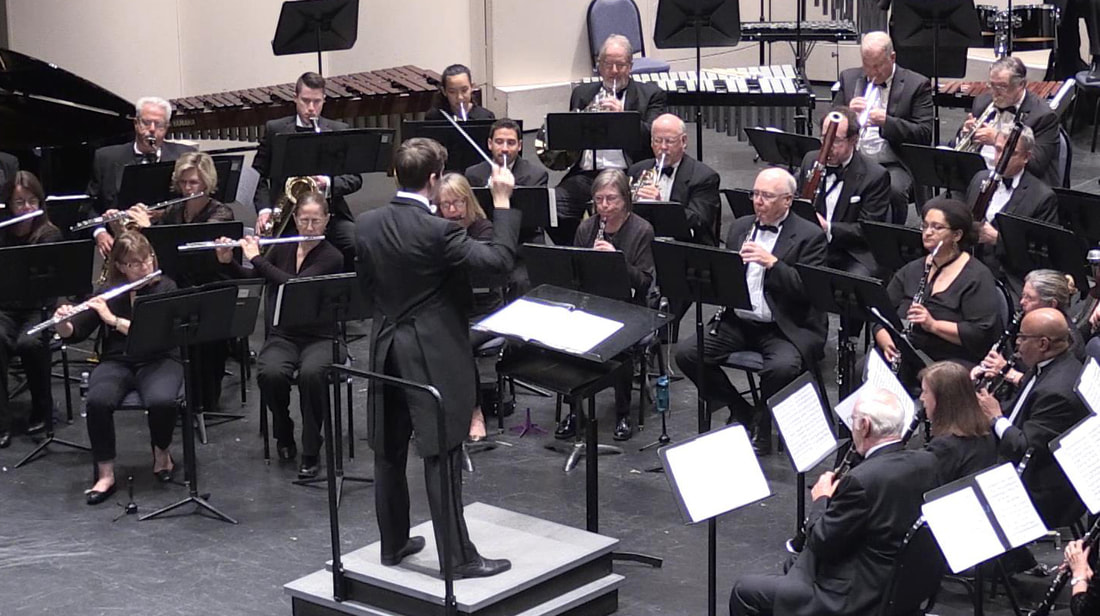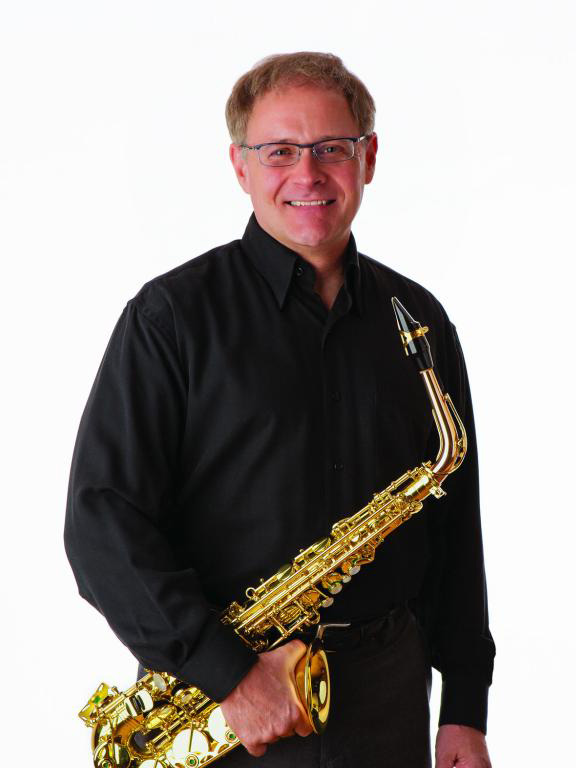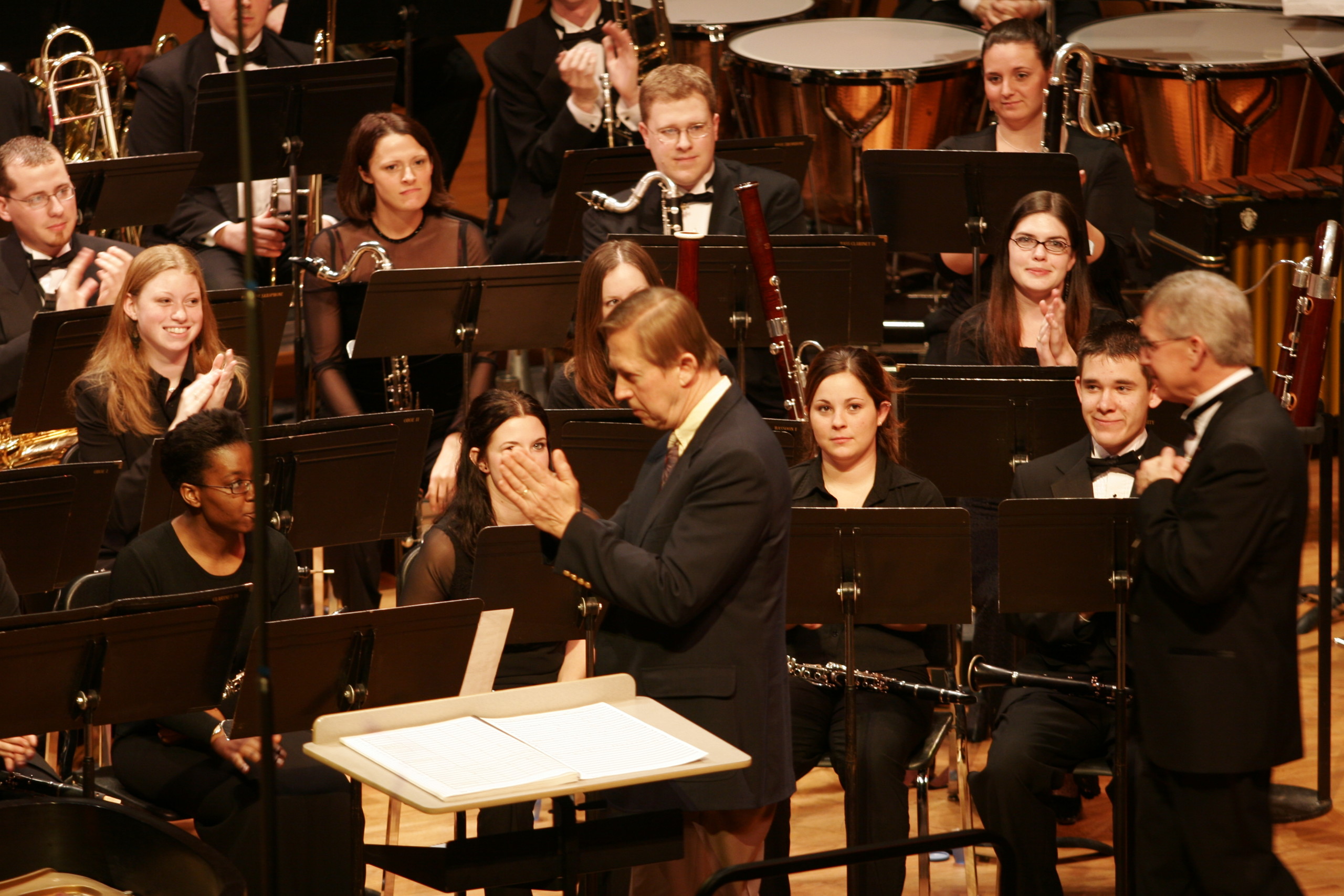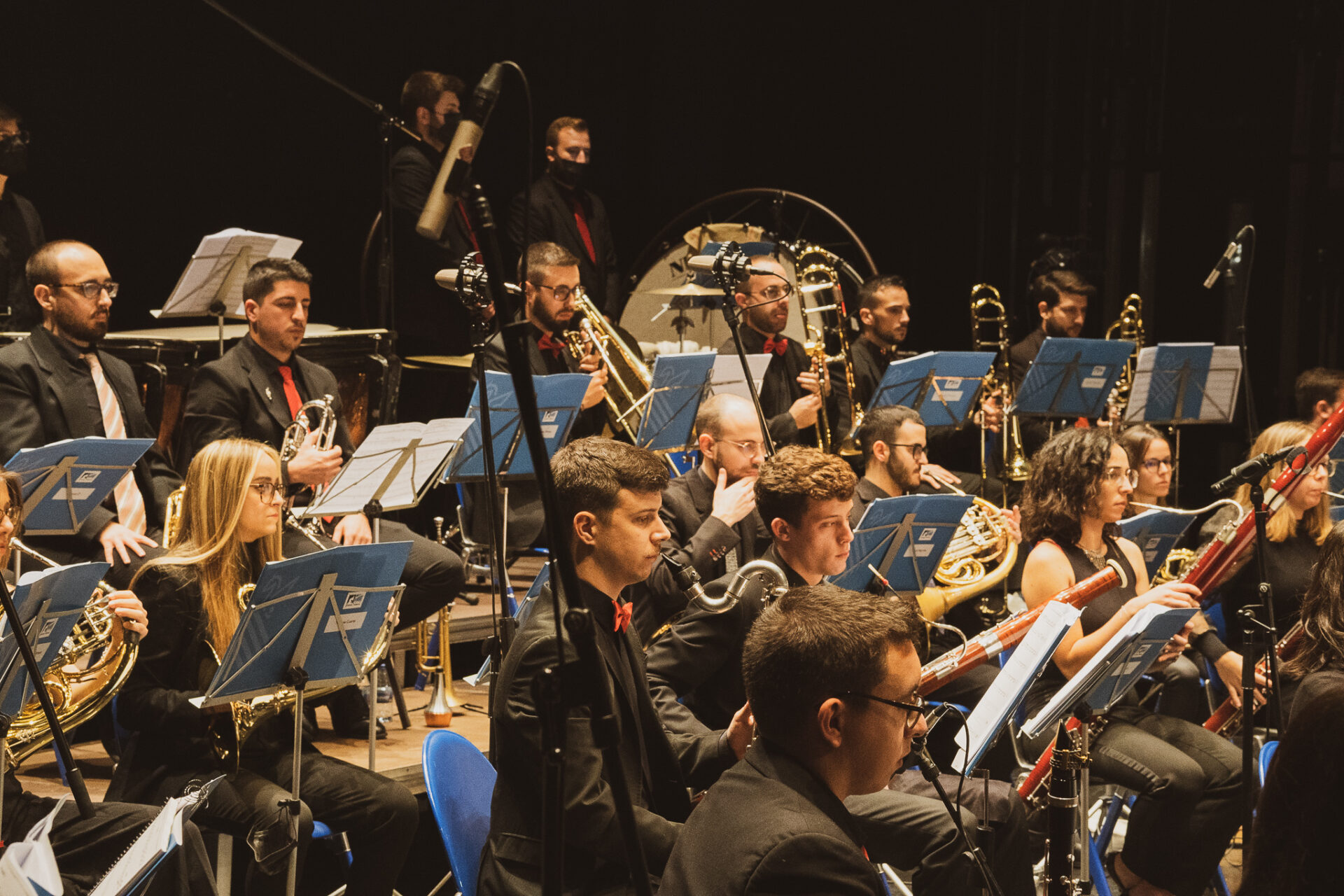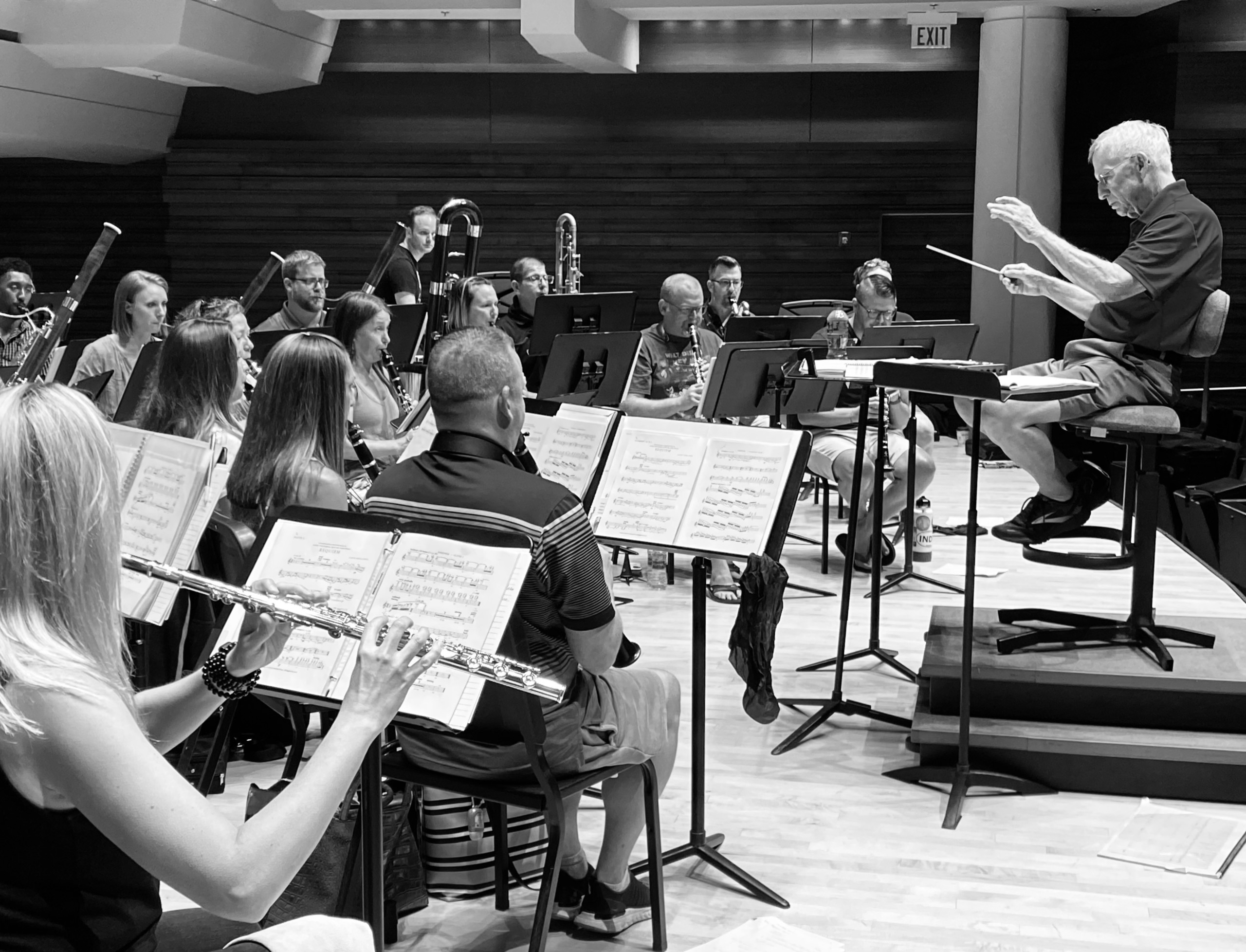Maslanka Weekly highlights excellent performances of David Maslanka’s music from around the web.
David’s music for winds has become especially well known. Among his more than 150 works are over 50 pieces for wind ensemble, including eight symphonies, seventeen concertos, a Mass, and many concert pieces. His chamber music includes four wind quintets, five saxophone quartets, and many works for solo instrument and piano. In addition, he has written a variety of orchestral and choral pieces.
This week, we are exited to feature new performances of three works just uploaded to the web in the past seven days: Symphony No. 10: The River of Time, Recitation Book, and Illumination.
Symphony No. 10: The River of Time
From Matthew Maslanka’s Program Note:
Symphony No. 10 was commissioned by a consortium headed by Stephen K. Steele, Scott Hagen (University of Utah), and Onsby Rose (The Ohio State University). My father passed away while writing the work. I completed the composition based on his sketches.
Dad wrote about the origins of the symphony:
The work began as always with meditation: “show me something I need to know about the piece I am going to write.” Here is the first image that came:
The Holy Mother takes me sliding down a rocky mountain slope, all loose small rocks. It’s a wild stony country, very little vegetation, many beautiful colors in large rock formations, brilliant sun. We find a large pool nestled among tall vertical rock faces. The water is turquoise blue. We go into the pool and swim/flow downward, rising again toward a circle of light. At the surface is a “divine” place of craggy multicolored rock faces. A voice speaks my name and says, “you are ready, receive what wants to come through…We are here. You go and do.”
And the second from a few days later:
I am met by the Holy Mother in the guise of an 18-year-old Swiss farm girl – blond, pretty, traditional dress. I am shown various views of the earth and the oceans. The earth is clean, the oceans are clean. Humans have come into balance with the earth and are happy. The farm girl shows me a farm full of milk cows. The world is still technological but we are living an agrarian life, I am shown a large beautiful auditorium where music is being made. The girl thanks me for what I have done to make this new world possible. This is an odd thought for me to accept.
Then came the usual problem of composing. “I” desired to write an important piece. In my vague imagination it was like one of the big symphonies of Dimitri Shostakovich, my favorite modern symphonist. But my inner compass kept dragging me away from that, and pulling back to the humble world of the chorales. A pattern began to emerge of a chorale and a response, the response being the evolution of a radically simple, intimate, and beautiful melody. This process kept repeating itself until half a dozen of these melodic pairings began to emerge – all simple, beautiful, personal, not “important”. At each step I continually questioned whether this was the symphony that needed to be: “Really? Seriously? This is what you want me to do?” – yes. Finding the structural line for the whole piece was extremely difficult. At a certain point, I sensed that a large movement wanted to happen, but it existed only as a hard little node that had begun to rise to consciousness.
At the time of his death, my father had fully completed the first movement and half of the second. The remainder of the second movement and the whole of the fourth movement were sketched out. The third movement (“the hard node”) had an opening sketched, but the rest was in fragments. Dad asked me to finish the work if he were unable to complete it. I drew on my long experience working with dad and his music to first understand the sketches and then to piece them together.
Dad titled the completed first movement after his wife and my mother: “Alison.” He was writing as my mother was dying of an immune disorder in the spring of 2017. This movement may be seen through that lens, with bitter rage at the coming loss and a beautiful song full of love.
I have named the subsequent movements. The second movement’s title, “Mother and Boy Watching the River of Time,” comes from my father’s final pencil sketch of the same name. It depicts two small figures sitting on a river bank in front of a forest and mountain foothills. The music is largely a transcription of the second movement of the euphonium sonata he wrote for me, Song Lines.
The third movement posed a special challenge. The movement was both at the emotional center of the symphony and the least finished. One tune, marked “The Song at the Heart of it All” in the sketch, became the heart of the work and of the symphony. The full statement of the theme may be found at bar 174, with a quiet restatement in the solo euphonium at bar 217. It is a pure expression of love: my love for my father, his love for me, my mother, sister, and brother, and by extension, love for humanity. The restatement of the opening material, though at first comforting, becomes jarring and unsettled, rising to a dissonant roar. The euphonium soloist is left to scream, “why?!” at world that seems content to keep spinning.
The third movement became my response to the deaths of my mother and father. It is not what dad would have written; rather, it is a synthesis of his mind and his, colored by extraordinary pain and loss. I have named the movement after my father.
The fourth movement, “One Breath in Peace,” is the acceptance and ability to move forward after loss. The long solo lines for oboe reflect and extend the bookending chorale, “Jesu, der du meine Seele”. Dad’s customary morning practice was to play one chorale from the Bach 371 Chorales. He would sing each line as he played along on the piano. In this way, he came to deeply understand these miniature jewels of western music. I have closed the symphony with the last statement of the chorale, with the pianist singing the tenor line. I hope you will hear his voice in it.
Watch below as Brad Hogarth leads the Contra Costa Wind Symphony in a great performance of the entire symphony.
More info
- Brad Hogarth
- Contra Costa Wind Symphony
- Symphony No. 10 @ davidmaslanka.com
Recitation Book – V. Fanfare/Variations on Durch Adams Fall
From David Program Note:
I have loved Italian madrigals since my student days. Recitation Book for saxophone quartet feels something like a madrigal collection, but with a grand finale. My approach to composing is vocal, and the singing quality of saxophones is one of their finest strengths. The movements in this piece are relatively brief and intimate songs.
Much of my recent music draws its inspiration from the distant past. An old melody pushes open a door in my mind and a parallel world or dream makes its way out. Each piece in this set found its inspiration in that way.
The title, “Recitation Book,” implies a set of lessons. I don’t want to say explicitly what each “lesson” means, but the titles of the pieces circle around the theme of death, which for me implies the passing of the old, and the coming of the new.
I have not only quoted a number of old melodies in Recitation Book, but two whole brief pieces as well. This first is J.S. Bach’s four-part chorale Jesu, meine Freude, and the second is an arrangement for the four saxophones of the five-voiced madrigal Ecco, morirò dunque by Gesualdo di Venosa.
Watch Below as the Caelus Saxophone Quartet gives a terrific performance of Movement V.
More info
- Recitation Book @ davidmaslanka.com
Illumination
From David’s Program Note:
“Illumination” – lighting up, bringing light. I am especially interested in composing music for young people that allows them a vibrant experience of their own creative energy. A powerful experience of this sort stays in the heart and mind as a channel for creative energy, no matter what the life path. Music shared in community brings this vital force to everyone. Illumination is an open and cheerful piece in a quick tempo, with a very direct A-B-A song form.
Watch below as Fernando Ferreira leads the Banda Recreativa Eixense in a rousing performance of this work.
More info
- Banda Recreativa Eixense
- Illumination @ davidmaslanka.com
We would love to hear from you! If you know of any outstanding performances of David Maslanka’s music on the web, please email us at maslankaweekly@maslanka.org.
